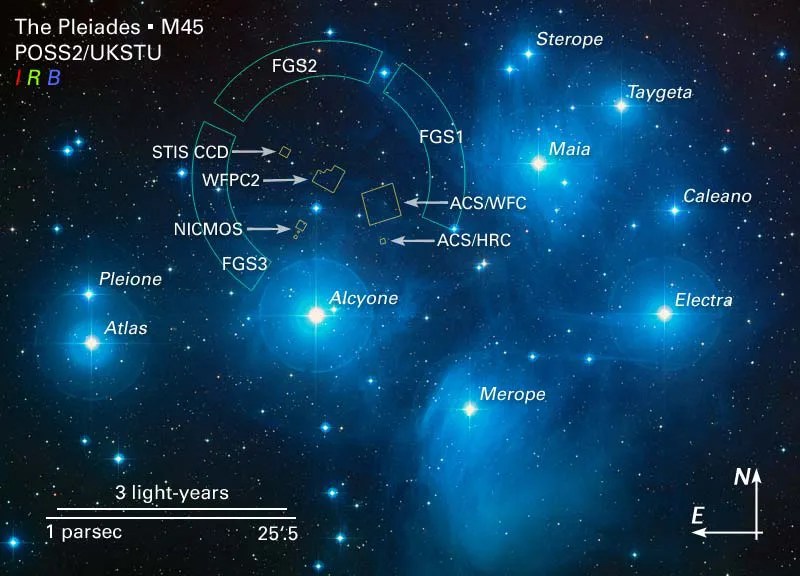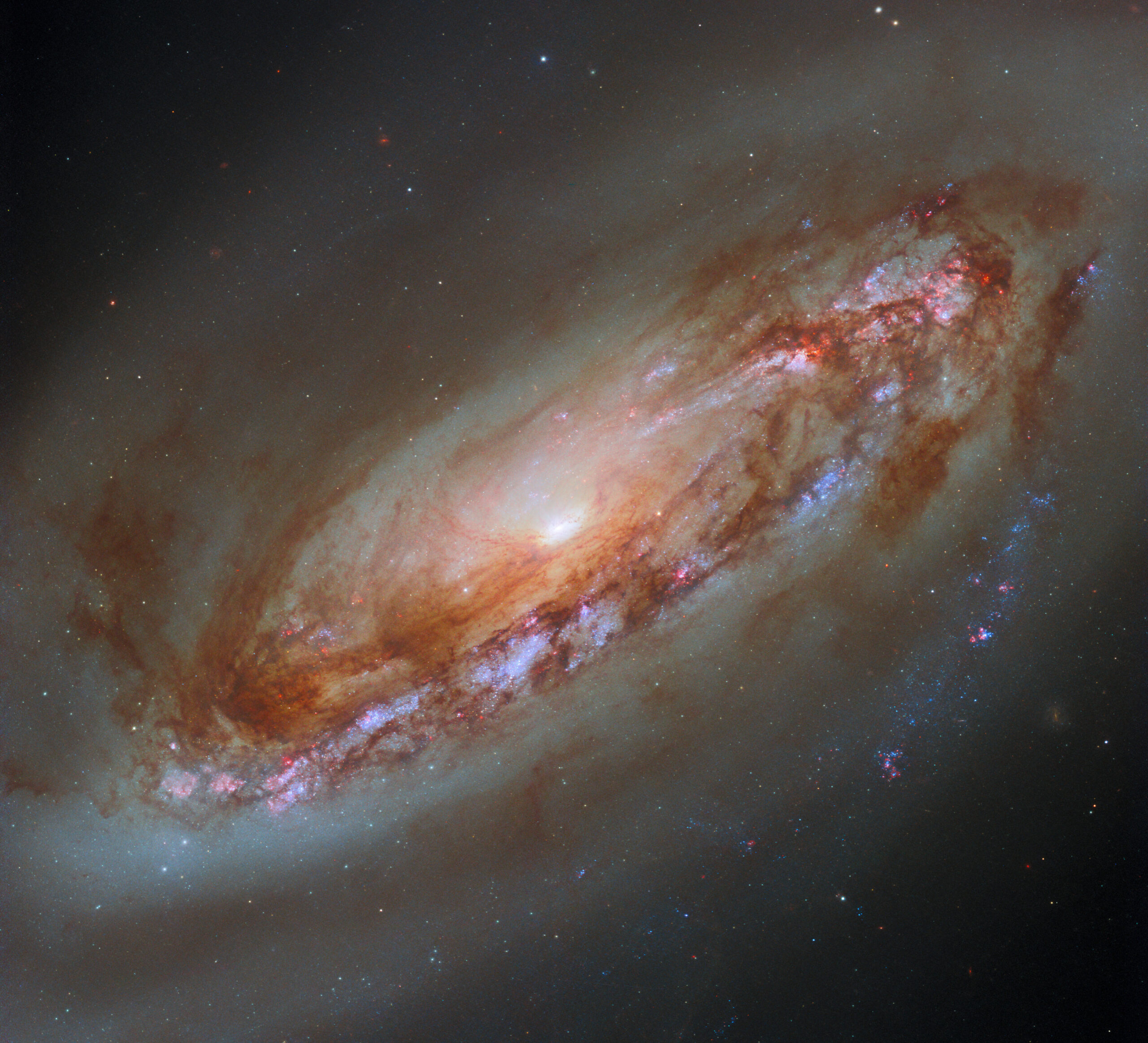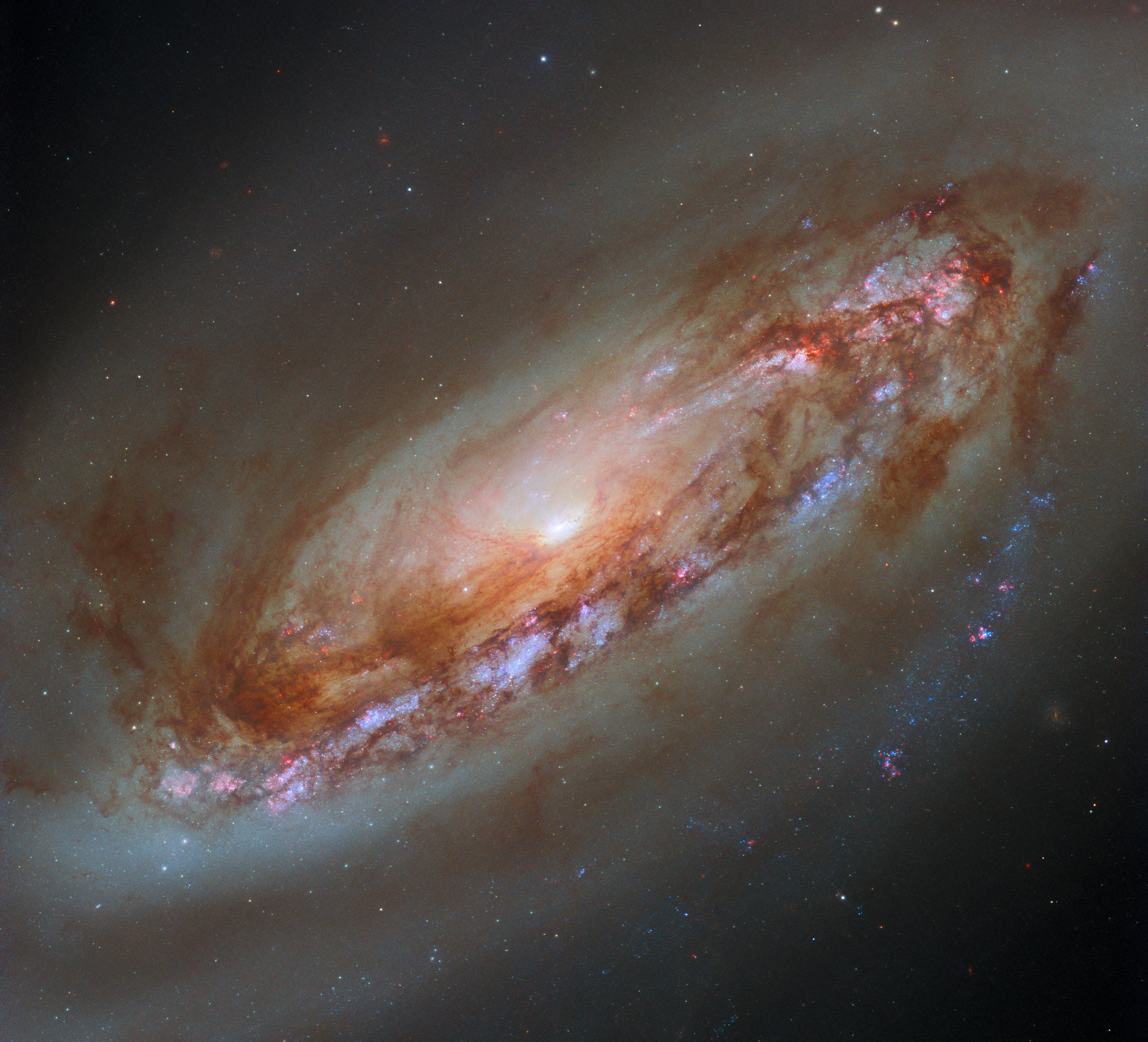Hubble Space Telescope Home Hubble Captures a New View of… Hubble Space Telescope Hubble Home Overview About Hubble The History of Hubble Hubble Timeline Why Have a Telescope in Space? Hubble by the Numbers At the Museum FAQs Impact & Benefits Hubble’s Impact & Benefits Science Impacts Cultural Impact Technology Benefits Impact on Human Spaceflight Astro Community Impacts Science Hubble Science Science Themes Science Highlights Science Behind Discoveries Hubble’s Partners in Science Universe Uncovered Explore the Night Sky Observatory Hubble Observatory Hubble Design Mission Operations Missions to Hubble Hubble vs Webb Team Hubble Team Career Aspirations Hubble Astronauts News Hubble News Hubble News Archive Social Media Media Resources Multimedia Multimedia Images Videos Sonifications Podcasts E-books Lithographs Fact Sheets Glossary Posters Hubble on the NASA App More Online Activities 2 min read
Hubble Captures a New View of Galaxy M90  This eye-catching image offers us a new view of the spiral galaxy Messier 90 from the NASA/ESA Hubble Space Telescope. ESA/Hubble & NASA, D. Thilker, J This NASA/ESA Hubble Space Telescope image features the striking spiral galaxy Messier 90 (M90, also NGC 4569), located in the constellation Virgo. In 2019, Hubble released an image of M90 created with Wide Field and Planetary Camera 2 (WFPC2) data taken in 1994, soon after its installation. That WFPC2 image has a distinctive stair-step pattern due to the layout of its sensors. Wide Field Camera 3 (WFC3) replaced WFPC2 in 2009 and Hubble used WFC3 when it turned its aperture to Messier 90 again in 2019 and 2023. That data resulted in this stunning new image, providing a much fuller view of the galaxy’s dusty disk, its gaseous halo, and its bright core.
This eye-catching image offers us a new view of the spiral galaxy Messier 90 from the NASA/ESA Hubble Space Telescope. ESA/Hubble & NASA, D. Thilker, J This NASA/ESA Hubble Space Telescope image features the striking spiral galaxy Messier 90 (M90, also NGC 4569), located in the constellation Virgo. In 2019, Hubble released an image of M90 created with Wide Field and Planetary Camera 2 (WFPC2) data taken in 1994, soon after its installation. That WFPC2 image has a distinctive stair-step pattern due to the layout of its sensors. Wide Field Camera 3 (WFC3) replaced WFPC2 in 2009 and Hubble used WFC3 when it turned its aperture to Messier 90 again in 2019 and 2023. That data resulted in this stunning new image, providing a much fuller view of the galaxy’s dusty disk, its gaseous halo, and its bright core.
The inner regions of M90’s disk are sites of star formation, seen here in red H-alpha light from nebulae. M90 sits among the galaxies of the relatively nearby Virgo Cluster, and its orbit took M90 on a path near the cluster’s center about three hundred million years ago. The density of gas in the inner cluster weighed on M90 like a strong headwind, stripping enormous quantities of gas from the galaxy and creating the diffuse halo we see around it. This gas is no longer available to form new stars in M90, with the spiral galaxy eventually fading as a result.
M90 is located 55 million light-years from Earth, but it’s one of the very few galaxies getting closer to us. Its orbit through the Virgo cluster has accelerated so much that M90 is in the process of escaping the cluster entirely. By happenstance, it’s moving in our direction. Astronomers have measured other galaxies in the Virgo cluster at similar speeds, but in the opposite direction. As M90 continues to move toward us over billions of years, it will also be evolving into a lenticular galaxy.
Facebook logo @NASAHubble @NASAHubble Instagram logo @NASAHubble Media Contact:
Claire Andreoli
NASA’s Goddard Space Flight Center, Greenbelt, MD
claire.andreoli@nasa.gov
Details Last Updated Oct 17, 2024 Editor Andrea Gianopoulos Location NASA Goddard Space Flight Center Related Terms Astrophysics Astrophysics Division Galaxies Goddard Space Flight Center Hubble Space Telescope Science Mission Directorate Spiral Galaxies The Universe
Keep Exploring Discover More Topics From NASA Hubble Space Telescope
Since its 1990 launch, the Hubble Space Telescope has changed our fundamental understanding of the universe.

This beautiful spiral is expected to evolve into a lenticular galaxy.





